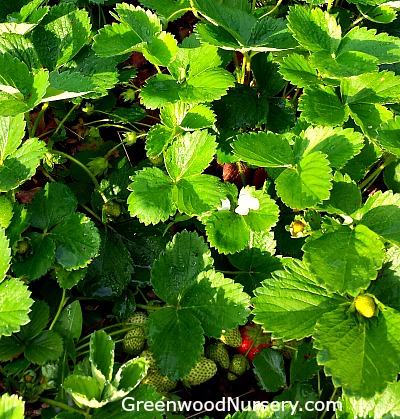Free gardening gloves when you spend $75.00 or more!
Although they have a reputation for straying, heart-shaped strawberries once were a symbol for love and won’t waste any time rooting themselves in your affections. Here, we’ll concentrate on the most popular June-bearing Sweet Charlie and Chandler varieties, which produce their whole crop within three weeks in late spring or early summer.
If you want “strawberry fields forever,” keep in mind that the plants prefer well-drained, and mildly acidic soil with a pH between 5.5 and 6.8. Their location must receive a minimum of 6 hours of sun per day and 1 inch of rain per week. To prevent disease, don’t choose a site where nightshade-y characters—such as potatoes or tomatoes—have hung out before.
Should your soil be heavy clay, consider building raised beds for your strawberries the autumn before you plant them. In addition to improving drainage, those beds will allow you to get an earlier start in the spring, as high ground warms more quickly.
Plant dormant, bareroot strawberries as soon as your soil can be worked in the spring, usually about six weeks before your last frost date. Gardeners in USDA zones higher than 6 often can set out the plants in late autumn instead. June-bearing strawberries should be placed about 18 inches apart with a 3-foot path between rows.
Cover all of the roots on each plant, leaving the crown at ground level. Unless you started your strawberries in the fall, it’s a good idea to remove all the blossoms that form the first year on June-bearers to allow the plants time to “put down roots” before they fruit during their second year.
When they begin to send out runners with plantlets on them, allow only about three per plant to remain, making sure those plantlets are spaced at least 6 inches apart. Once temperatures dip close to 20 degrees in late autumn or early winter, mulch your strawberries with several inches of straw, shredded leaves, evergreen boughs, etc. You can remove that protection in spring, but don’t forget to cover the plants again if frost threatens while they are in bloom.
About a week after your June-bearers have stopped fruiting their second year, trim them back with your lawnmower, setting the deck so that the blades pass 1 inch above the plants’ crowns. This pruning should ensure that you get the cream of the crop the following year—or at least a plentiful crop to eat with your cream!
Bare root strawberry plants begin shipping in mid November for fall planting. In spring, strawberry plants begin shipping early March generally to early summer as available.

- cheryl's blog
- Log in or register to post comments







